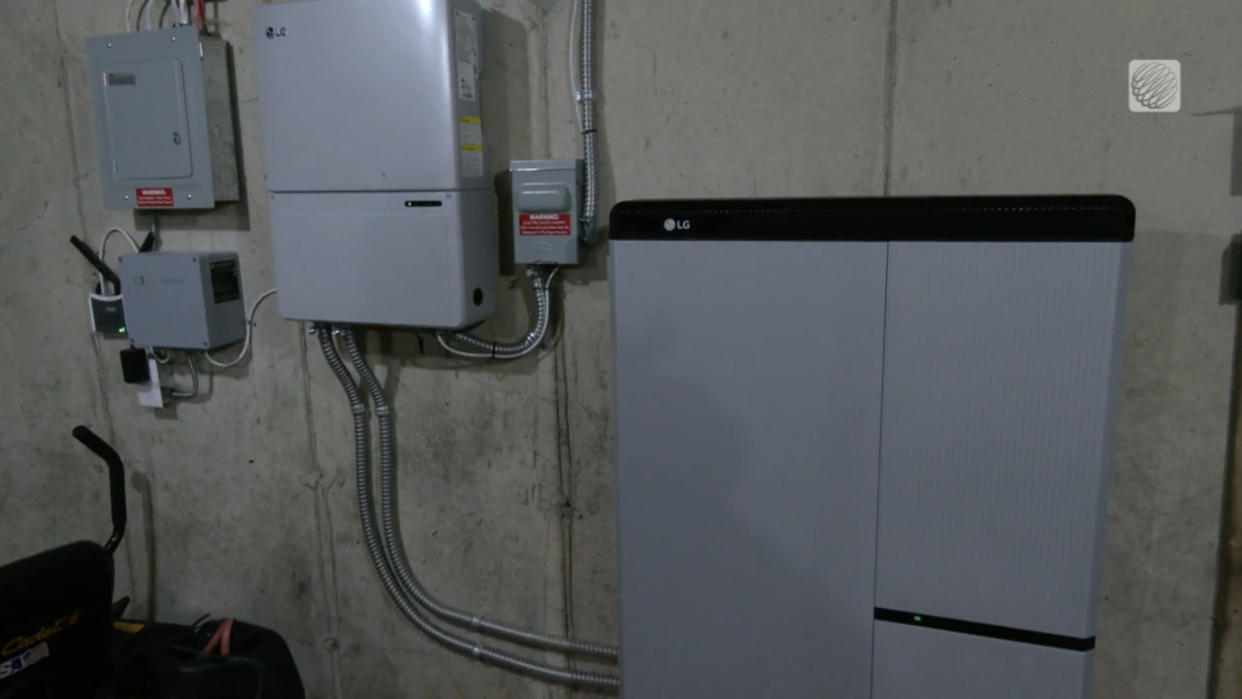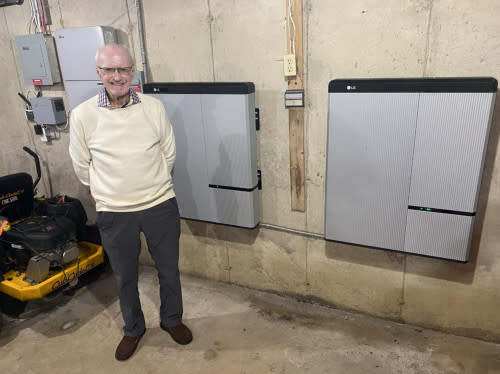Hurricane-proof power? Nova Scotia could have the answer in a battery

Post-tropical storm Fiona had a peak wind gust of 179 kilometres per hour in Arisaig, N.S., when it barrelled through Atlantic Canada in September 2022.
Tom Macpherson lives in Black Point, just 50 kilometres down the Northern Coast from Arisaig, but despite 405,000 Nova Scotia power customers losing electricity during the storm’s peak, Macpherson's lights remained aglow for three consecutive days while his neighbours' were in a blackout. His fortunate illumination can be attributed to his involvement in a trial program for battery energy storage initiated by Nova Scotia Power. Now complete, the $19 million program aimed to investigate the best way to integrate batteries and electric vehicles into the province’s energy system.

Tom Macpherson standing in front of the two batteries and the electronic systems that control it. (Nathan Coleman/The Weather Network)
Two battery technologies were deployed in the pilot: a jointly offer from Sunverge and LG Electronics, which Macpherson had installed, as well as Tesla Powerwalls in other homes.
“It appealed to me to go green, and at my stage in life, I wasn’t fussy on going out and getting a gasoline generator, hooking it up in the middle of a storm, getting my power from that, and having to feed it gas,” says Macpherson.
So, how does it work?
Ed Cullinan, senior manager of the pilot at Nova Scotia Power, says that about 99 per cent of the time, the batteries are connected to the grid, and Nova Scotia Power can use the energy that’s stored to manage energy in the home, making the home a node in the energy system.
“When the power goes out in a severe weather event, the battery is there, and we make sure it’s charged up for the customer so that it acts like a generator," explains Cullinan.
Macpherson has everything from his lights, refrigerator, and microwave to his heat and water pump all running off the battery.
The pilot program rolled out the batteries to 125 customers. Performance results are now being looked at to see if they can be scaled up in the future.
The batteries can provide backup power in the event of an outage, and when connected to the grid, the utility can manage them and store renewable power for later use.
“We can tell the entire fleet when it may be more windy or when it may be more sunny to actually charge at that time, and so more renewable energy gets stored in the fleet, and then that can be discharged later," says Cullinan.
Participation in the program gave customers a deal on the battery systems. Each customers paid from $3,000 to $4,200, depending on the battery system, and since they could pay monthly, it equated to between $25 and $35 extra a month. The agreement lasts for 10 years.
“The big thing is I’m considering solar, so if I go solar, it’s a very simple matter to hook up and charge the battery from solar panels," adds Macpherson.

